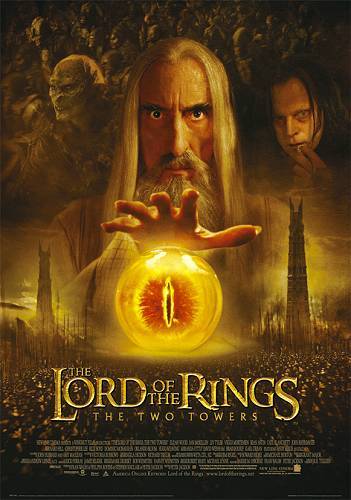

Tolkien's The Two Towers, the second volume in his Lord of the Rings novel, anything from the novel not specifically mentioned or depicted in the films could not be represented in the game. The game is an adaptation of Peter Jackson's 2001 film The Lord of the Rings: The Fellowship of the Ring and his 2002 film The Lord of the Rings: The Two Towers, which was released shortly after the game. In November 2003, EA released a sequel, The Lord of the Rings: The Return of the King. Originally released in North America for the PlayStation 2 in October 2002, it was released in November 2002 for the Game Boy Advance, in December 2002 for the Xbox and GameCube, and in May 2003 for mobile. The game was published on all platforms by Electronic Arts.
FILM STAPANUL INELELOR WINDOWS
A version for Microsoft Windows developed by Ritual Entertainment was cancelled during development. A 2D Game Boy Advance game of the same name was made by Griptonite Games, a port to the GameCube by Hypnos Entertainment, and to mobile by JAMDAT. The balanced and purposeful use of computer-generated imagery in the LOTR films is part of what makes these films stand out as exceptional.The Lord of the Rings: The Two Towers is a 2002 action hack and slash video game developed by Stormfront Studios for the PlayStation 2 and Xbox. Once again, one needs only to look as far as The Hobbit trilogy to see just how bad excessive CGI can look, even in Middle-earth. The Lord of the Rings - Stapanul inelelor: 01.The Fellowship of the Ring (2001) Fria inelului 02.The Two Towers (2002) Cele dou turnuri 03.The Return of the King (2003) Întoarcerea regelui 04.Born of Hope (2009) Speranta renaste The Hobbit - Hobitul: 05.An Unexpected Journey (2012) O cltorie neateptat 06. No matter how good the graphics, nothing beats a goblin face that consists of a real-life actor plastered in makeup and covered in a wig. This led to a remarkably realistic feeling that most modern fantasy films completely lack. On the other hand, with CGI still fairly unstable, the production crew naturally depended heavily on human actors covered in makeup, especially when it came to the close-up shots. That said, the groundbreaking technology used to turn Andy Serkis into Gollum was particularly stunning - not to mention the computer generated geographic locations and the countless panoramics of Elvish warriors, Orc armies, charging Rohirrim, and so on. This was just a year and a half after Jar Jar Binks came into existence, so CGI expectations were about as low as they could get. On the one hand, the trio of movies benefited from the fact that they were well-funded and ambitiously filmed when CGI was still in its infancy. Like so many other films in the genre, The Hobbit movies choose to lean on CGI far too often as a lackluster alternative to realistic props - especially when compared to Jackson's obsessively detailed LOTR trilogy.

While The Hobbit films are impressive in some ways, they clearly lack the same level of detail that the LOTR trilogy boasts. One needs to look no further than the Lord of the Rings' cinematic "sequel prequels" (read: The Hobbit trilogy) to see how much the original trilogy stands apart from other fantasy productions.
FILM STAPANUL INELELOR PLUS
Plus 1,800 pairs of prosthetic Hobbit feet were also made - and that's just for the four main Hobbit actors alone.
FILM STAPANUL INELELOR PROFESSIONAL
Just to name a few of the splashiest factoids, professional swordsmiths were hired to create weapons for the films, roughly 10,000 arrows were made for The Fellowship of the Ring alone, and 12.5 million rings of chainmail were forged for the countless suits of armor seen throughout the trilogy. Of all the details, the costumes are the area where the production team's prowess shined the brightest. While they have their cringe-worthy moments, all three films still hold up under scrutiny - which certainly can't be said for all movies from the early years of the 21st century. The best testament to the scope of the movies can be seen in how well they still hold their own, even against more modern, CGI-infused competition. From jaw-dropping panoramic shots to oversized sets, an epic score, an armory of weapons, and an ocean of make-up and prosthetics, there's nothing about this trilogy that could be considered small. The sheer scope of the project was impressive on every level. However, none of the films that predated this point in time had anywhere near the level of ambition that The Lord of the Rings aimed for. There were plenty of fantasy films produced before The Fellowship of the Ring arrived in theaters in late 2001. That would be like saying 2008's Iron Man was the first superhero flick ever filmed. We're not claiming that Jackson's movies were the first fantasy films ever made.


 0 kommentar(er)
0 kommentar(er)
